The Thalangama Area
RESEARCH AT THE LAKE
1.
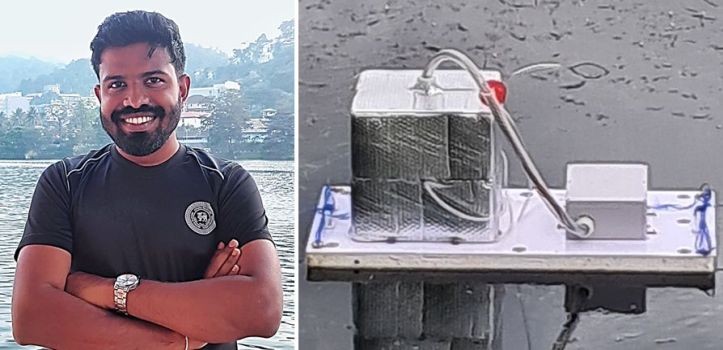
Dilan Dileepa Bandara is working on his PhD at the Postgraduate Institute of Agriculture, University of Peradeniya. His research focuses on quantifying and understanding carbon flux dynamics from tropical freshwater wetlands in Sri Lanka, with a particular focus on man-made systems. The study seeks to unravel the biogeochemical mechanisms driving greenhouse gas emissions and to evaluate the impacts of anthropogenic activities such as land use change, pollution, and hydrological management on these fluxes. The Thalangama lake is one of his study areas which cover different climate zones of the island. The overarching objective is to produce scientific knowledge that supports sustainable wetland management and informs climate mitigation policies at both local and national scales.
2.

Under the supervision of Prof. P. Nihal Dayawansa from the University of Colombo, the students M. Fernando, T. Abeyratne, C. Dilshan, K. Atapattu, S. Amarasekara and S. Jayawickrama undertook a project at the Thalangama lake to study the possible relation between water quality and fish diversity.
According to the biodiversity inventory as reported in the Environmental Assessment report of the Madiwela East Diversion Scheme, there are about 26 fish species in the lake, including 4 endemic ones and also at least 4 exotic (which can damage the ecosystem).
The number is higher than expected as the report also mentions high levels of Biological Oxygen Demand (BOD) resulting in low levels of Dissolved Oxygen which is negatively affecting the aquatic population.
The selected water quality parameters by the university team included pH, electrical conductivity, and dissolved oxygen.
Field work started in January 2025. The project is expected to end early April once the data are analysed.
3.


4.
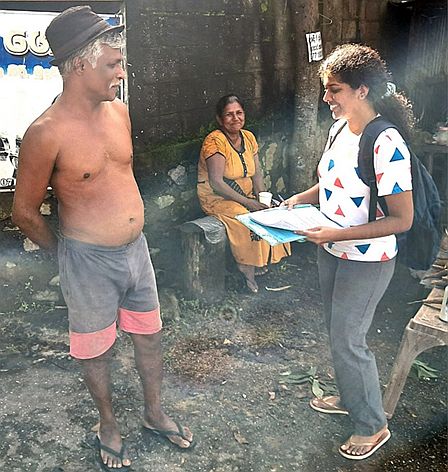
5.
Ranoja Dikowita, a student from the Department of Zoology and Environmental Management at the University of Kelaniya produced a Story Map about the Thalangama Lake for her externship related to the Nature Conservancy and National Geographic Society. The beautiful multimedia story involving aerial photographs can be found here Story map. To read the story scroll down after opening it.6.
Lashika P. Premarathne, undergraduate student at the University of Ruhuna, Dept of Geography, studied under the guidance of Mr. M. L Karunarathne the impact of anthropogenic activities on urban wetland and the potential of community conservation using the Thalangama lake and wetland as case study. The study was based on 50 questionnaire responses, 5 in-depth interviews, and secondary data. About 3 of 4 respondent consider the lake as a place of agricultural importance and recreation, but also see its ecosystem threatened by illegal waste disposal and land encroachment, influenced by political and social powers. While some problems, like animal road kills can be addressed, e.g., through wild life corridors, the overall conservation of this ecosystem requires a close collaboration between the government and the community.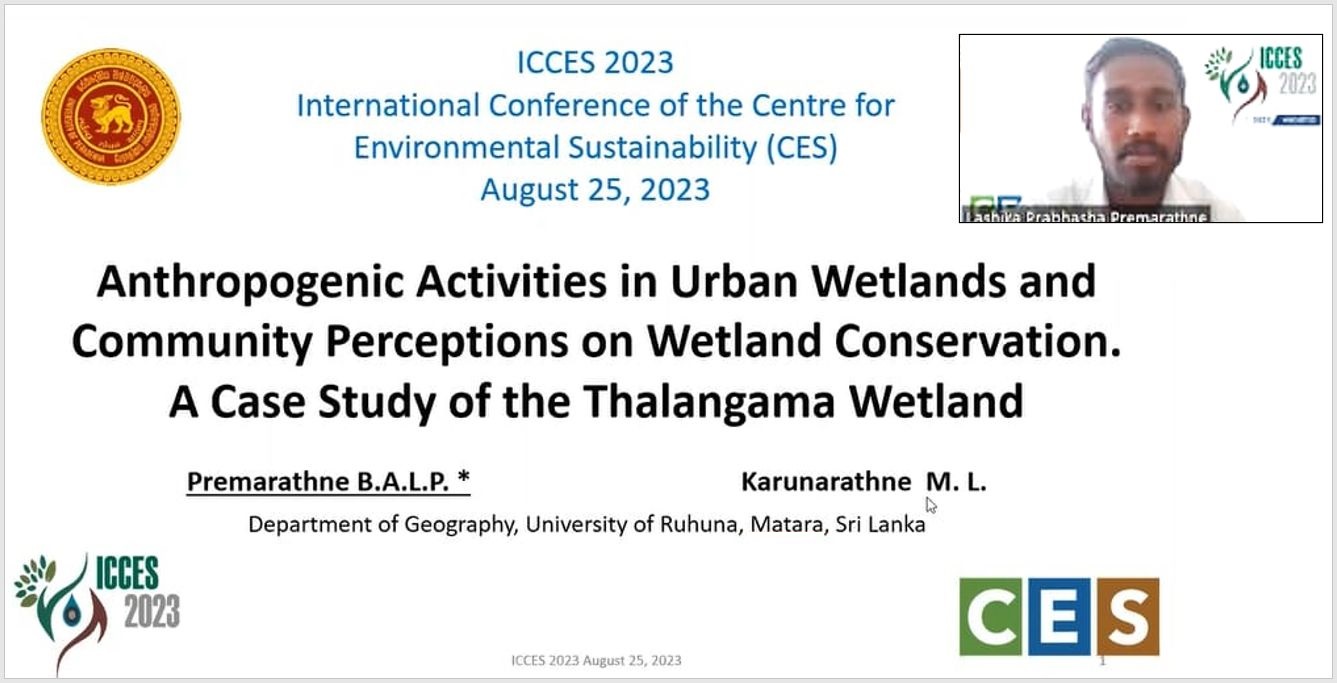
7.
Based on the environmental and economic impacts, the free-floating aquatic plant Salvinia molesta ranks a close second behind water hyacinth on a list of the world's most noxious and invasive aquatic weeds. For her biology class at the Overseas School of Colombo (OSC), Sheruni Pilapitiya studied how Salvinia, which is very common on the Thalangama lake, is reacting to changes of the lake’s water acidity or alkalinity, commonly measured via its pH (on a scale from 0-14). Sheruni used lake water and analysed Salvina biomass development under different artificially created pH scenarios (same temperature as at the lake). She identified in a well-designed experiment a pH of around 7 as optimal for Salvinia growth, which is within the common pH range (6.5-7.5) measured over the year in different parts of the lake.
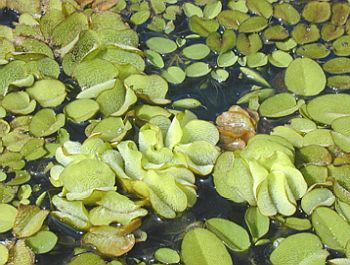
8.
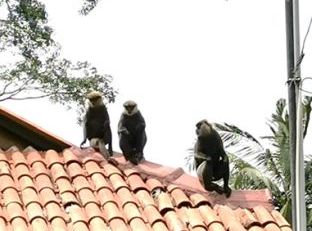
9.
On 14th of August 2020, Malsi Angekumbura from the University of Kelaniya started her first sampling of water quality parameters in the Thalangama tank. The undergraduate research is being supervised by Dr Shamen P. Vidanage from the Department of Zoology and Environmental Management.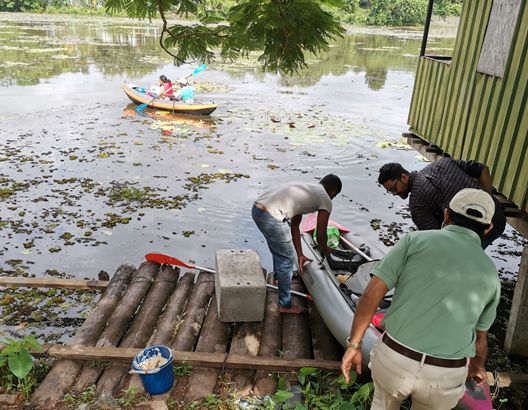
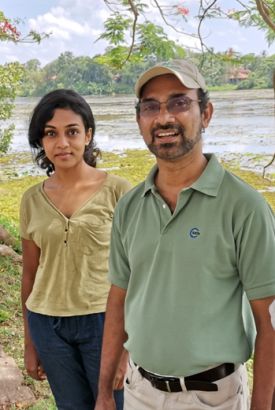
10.
The Sri Lankan NGO ‘People To People Volunteers’ supports in the Thalangama lake area the conservation of bio-diversity with funding from UNDP GEF. One of their activities serves the promotion of organic vegetable cultivation on the bushy ‘highlands’ (ovita) within the paddy fields. Other activities support, for example, dairy farmers. The contact is Mr Anuradha Prabath Kumara.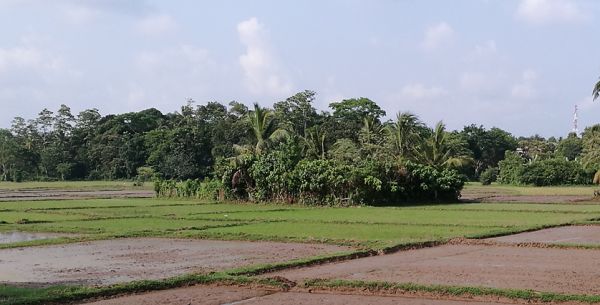
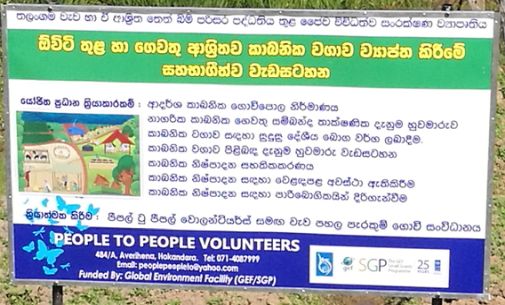
People to People is supported by the University of Sri Jayewardenepura for water and soil sampling and analysis (BOD, EC, pH, Temp., nutrients, heavy metals, pathogens) under the leadership of Snr. Prof. Pathmalal M. Manage.
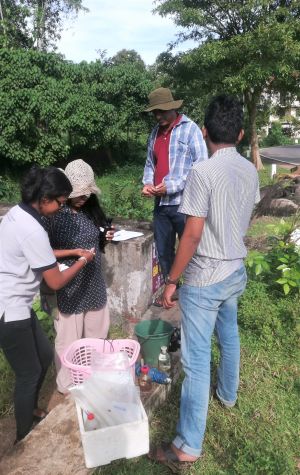
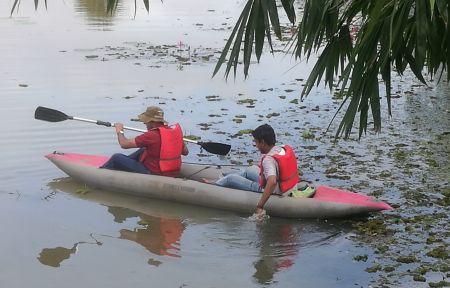
11.
The “Nature Beyond the Horizon” environmental society of the Horizon campus is working on a regular bird monitoring as one of their activities. The contact is natbeho@horizoncampus.edu.lk12.
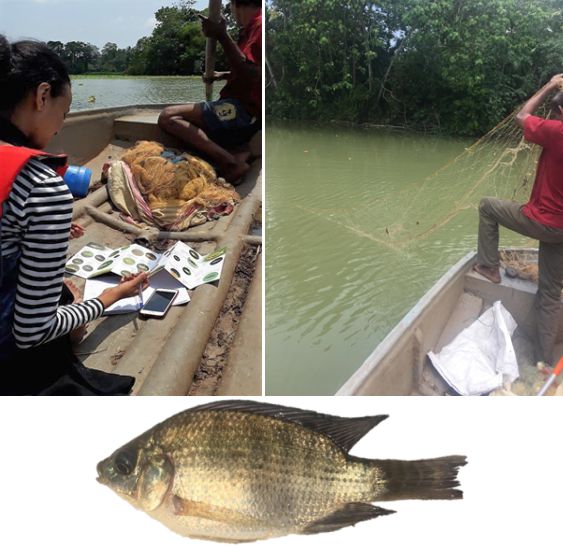
Mafaza Fara from Horizon Campus, Malabe, started in March 2019 her BSc research on water quality effects on fish diversity and distribution in Colombo wetlands, taking the Diyasaru park at Thalawathugoda, and the Thalangama lake as case studies. Aside water sampling and the analysis of water quality parameters, Mafaze will have to catch fish (with a net) and immediately release them back into the water after identification. Compared with the Diyasaru wetland, much fewer fish species were recorded in the Thalangama lake. “Tilapia” appears now the most common species which can live under certain oxygen conditions, and will be affected if the lake undergoes further maintenance measures that will decrease the already low dissolved oxygen levels in the water.
13.
Nuwanthika Dharmaratne from the University of Colombo is studying water quality changes in five wetlands of Colombo, including the Thalangama Lake. One photo shows her and her team colleague in action, the other some of the aquatic macro invertebrates (snails, insects, etc.) which are bio-indicators for different levels of water quality. Nuwanthika is also looking at birds and dragonflies next to a set of chemical and physical water characteristics, as well as disturbance factors. She says: “I want to check the co-relations between all of these factors to determine those which could most closely reflect wetland quality”.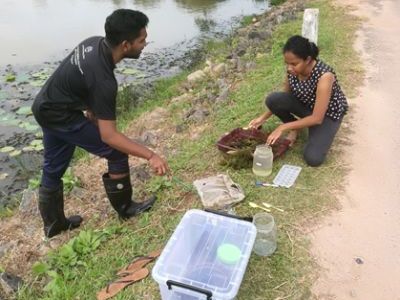
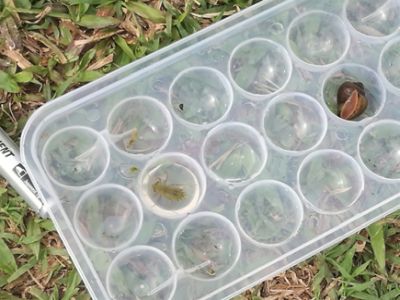
14.

In 2016, Sudarshani Widanapathirana tried to assess the economic value of the Thalangama wetlands in terms of ecosystem goods and services based on household surveys, focus group discussions and field investigations for her Master’s Degree at the Open University, Nawala. The research revealed that the contribution of the wetland to the local community has an estimated annual value of LKR 29.4 million (ca. US$ 200,000 in 2016) or LKR 0.25 million per hectare and year. This value is mostly based on crop (78%) and livestock (11%) production. Looking at the total economic value, including indirect land use, the study estimated an annual value of 54.1 million LKR (US$ 360,000) or 0.46 million LKR (US$ 3000) per ha. This value is relatively high compared to other wetlands across the globe.
Source: www.ou.ac.lk
15.

https://whitmanwire.com
16.
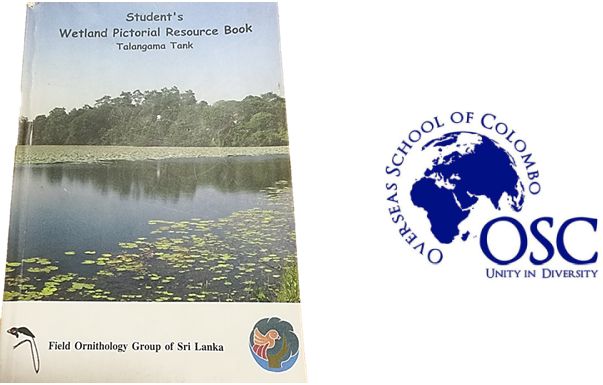
Since many years, the Overseas School of Colombo (OSC) runs a very active outdoor learning and study program, led among others, by Ian Lockwood. Given the proximity of the Thalangama wetlands to the school, they are featured over the years in the OSC program (see https://ianlockwood.blog/tag/talangama-wetlands).
OSC worked at the lake collaboratively with the Field Ornithology Group of Sri Lanka (FOGSL). In 2005, OSC and FOGSL published a Field Guide for the Thalangama Wetlands which is out of print. For many years the school hosted an annual “Walk for the Wetlands” though this has regrettably not happened recently. In more recent years the students have been studying water quality in Thalangama.
